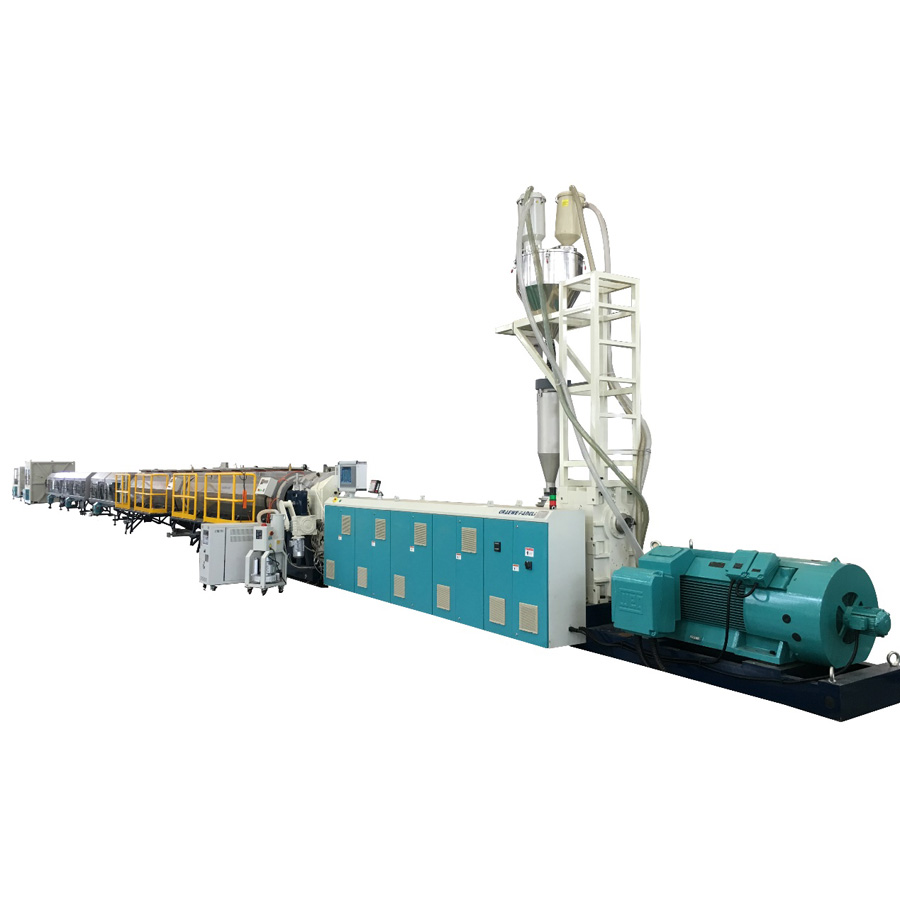- English
- Español
- Português
- русский
- Français
- 日本語
- Deutsch
- tiếng Việt
- Italiano
- Nederlands
- ภาษาไทย
- Polski
- 한국어
- Svenska
- magyar
- Malay
- বাংলা ভাষার
- Dansk
- Suomi
- हिन्दी
- Pilipino
- Türkçe
- Gaeilge
- العربية
- Indonesia
- Norsk
- تمل
- český
- ελληνικά
- український
- Javanese
- فارسی
- தமிழ்
- తెలుగు
- नेपाली
- Burmese
- български
- ລາວ
- Latine
- Қазақша
- Euskal
- Azərbaycan
- Slovenský jazyk
- Македонски
- Lietuvos
- Eesti Keel
- Română
- Slovenski
- मराठी
- Srpski језик
How could Easy-maintainable Pipe Extruder effective work?
2025-01-16
An easy-maintainable pipe extruder ensures effective and efficient operation by incorporating specific design elements, technological features, and operational strategies. Here’s how it can achieve optimal performance:
1. Streamlined Design for Accessibility
Effectiveness: Components like the barrel, screw, and die head are designed for quick disassembly and reassembly.
Benefit: Reduces downtime during routine maintenance or part replacement.
Example: Tool-free clamps or quick-release mechanisms make cleaning and servicing faster.
2. Advanced Control Systems
Effectiveness: Equipped with modern PLC (Programmable Logic Controller) or HMI (Human-Machine Interface) systems for precise control over temperature, pressure, and speed.
Benefit: Ensures consistent pipe quality while enabling easy troubleshooting.
Example: Automated alerts for wear-and-tear or required maintenance.
3. Self-Cleaning Features
Effectiveness: Some extruders have built-in self-cleaning mechanisms that reduce material residue buildup in the screw or barrel.
Benefit: Minimizes downtime for cleaning and ensures smoother transitions between different materials or colors.
4. Modular Component Design
Effectiveness: Modular screws, barrels, and dies allow quick swapping for different pipe dimensions or materials.
Benefit: Facilitates flexibility in production while minimizing setup time.
Example: A pipe producer can switch between PVC and HDPE quickly without major reconfigurations.
5. Efficient Cooling and Heating Systems
Effectiveness: Integrated high-efficiency heating elements and water-cooling systems maintain stable temperatures during operation.
Benefit: Enhances product consistency and reduces energy consumption.
Example: Precise temperature control reduces the likelihood of pipe deformities.
6. Low-Maintenance Gearbox and Motors
Effectiveness: Use of high-quality, low-maintenance motors and gearboxes ensures long service intervals.
Benefit: Reduces operational costs and increases reliability.
Example: Lubrication-free or sealed gearboxes reduce the need for frequent servicing.
7. Predictive Maintenance Technology
Effectiveness: Sensors monitor wear on critical parts (e.g., screw and barrel) and provide real-time data to predict maintenance needs.
Benefit: Avoids unexpected breakdowns and extends the lifespan of components.
Example: Vibration and temperature sensors on the gearbox detect potential issues early.
8. Energy Efficiency Features
Effectiveness: Optimized drive systems and variable frequency drives (VFDs) ensure energy-efficient operation.
Benefit: Lowers operating costs while maintaining high output.
Example: VFDs adjust motor speed based on production requirements, saving energy.
9. Simplified Workflow for Operators
Effectiveness: User-friendly interfaces and straightforward operational procedures reduce complexity.
Benefit: Ensures that less experienced operators can manage the extruder effectively.
Example: Step-by-step guided maintenance modes on the control panel.
10. Regular Maintenance Schedules and Best Practices
Effectiveness: Clear maintenance guidelines provided by the manufacturer help operators perform timely inspections and upkeep.
Benefit: Maintains consistent performance and extends machine life.
Example: Periodic checks of the screw, barrel, and heating elements ensure smooth operation.
Conclusion, An easy-maintainable pipe extruder works effectively by combining smart design, advanced technology, and practical operational strategies. These features ensure high productivity, consistent product quality, and minimal downtime, making it a valuable asset in modern pipe production lines.




